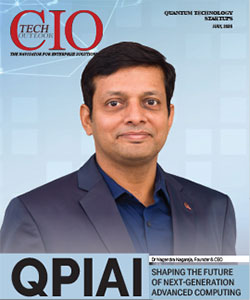Building Networked Communities for Future Generations
Miguel Gamino, CIO & Executive Director-Department of Technology, City and County of San Francisco
 Before the New Deal, the electric grid was not the ever-present utility we know today. Electricity was sparse, the networks were piecemeal and far from each other. Electricity was something people were excited to use, but few had any idea of how it would forever change their lives.
Before the New Deal, the electric grid was not the ever-present utility we know today. Electricity was sparse, the networks were piecemeal and far from each other. Electricity was something people were excited to use, but few had any idea of how it would forever change their lives.
In the early days, the electric grid only powered light bulbs. At the time, the light bulb was innovative technology. So, the big tech-disruption of the day targeted the oil-lamp industry, by being more reliable while reducing fire and noxious gas hazards; when the grid was stable. Demand for the light bulb increased as demand for the oil lamp declined. People came to expect the light bulb and reliable electricity as a human right and eventually the federal government stepped in.
During the New Deal the federal government, namely the Rural Electrification Administration (REA), took the light bulb to the most rural areas of our country. Using the electric grid Edison created, the federal government created the conditions for the private sector to efficiently deliver electric service to everyone, everywhere.
The federal government partnered with the private sector expanded electricity; and simultaneously increased its capabilities. In the end, the electric grid did much more than just power more light bulbs. The electric grid inspired the invention of the electric refrigerator, electric air conditioners, the personal computer, the modern day data center and today’s frontier; the Internet of Things (IoT). That is what happened when reliable, high-performing electricity became pervasive and affordable. I wonder what will happen when we do the same for Internet connectivity.
San Francisco’s separate wireless network--which operates in the unlicensed industrial, scientific, and medical (ISM) wireless frequency band of 902 MHz--is designed to specifically support the Internet of Things. Our civic tech hackathon, produced exciting solutions to a number of challenges present in civic life in cities across the globe.
In San Francisco, we’ve taken a number of steps to create an environment that fosters creativity and innovation; including hosting a 2-day hackathon where 150 participants were asked to leverage “smart” technology to address issues like air quality, water usage, and transportation.
The hackathon winners proposed interesting solutions to our civic issues. WaterSaver and DryWater both used machine learning and real-life data sources--like weather forecasts, live metrics, and moisture sensors--to control when a park or garden should be watered, instead of relying on a routine schedule. This may seem frivolous to some, but in California which is facing the most significant drought in its history, this kind of innovation is invaluable.
Audio Argus, used acoustic waves and strategically placed receivers to monitor the condition of mechanical devices like our public transit vehicles, to predict when these devices need maintenance, and alert the team before they break down.
One department in the City & County of San Francisco piloted a program that used a group of sensors to monitor the water levels of cisterns. The cisterns are submerged below our streets and placed strategically around the city. In the event of a disaster involving fire, our first responders consult the data the sensors report to avoid wasting precious time--when seconds matter most--dispatching team members to the nearest well with water.
These are just a few examples of what is possible if we create the right conditions for machines to talk to other machines. The machines ultimately supercharge our decision making power and inspire us to make even better machines. The true power of machine to machine networks has yet to be realized.
If today’s Internet of Things devices are the equivalent of yesteryear’s light bulbs, then internet access is the 21st century version of the electric grid. Much is said about the Internet of Things, but a big part of the conversation is often missing, connectivity. We all assume it will exist, in San Francisco we sometimes even take it for granted.
We can invent all the applications the world can dream of, but not a single one will be able to do its duty without connectivity. We’re very proud in San Francisco to be taking the lead not only in the U.S., but worldwide. I often speak with the Council of Global City CIOs, a group of colleagues that represent civic technologists from all around the world. We talk about the unique challenges each of us face in our respective cities. One topic that consistently arises is connectivity and our need to make it pervasive, high quality, and accessible to everyone in our communities.
Connectivity is a civilization changer. It is changing the face of the world forever. There are only a few things in the world that hold that title. Roads advanced mobility, by empowering people to move more quickly. First on foot, then by bicycle, next motorbike, then automobile and so on and so forth. The aqueduct is another example, it made farming in new places possible by altering our relationship to a water source. And, of course the same is true for the electric grid. Modern civilization would look very different, if the electric grid did not exist and if it were not made a utility.
Uber, Google, and the other innovative companies of today are generation changers. To be replaced, eventually many years from now by some slicker version of themselves. Connectivity, however, is a civilization changer. It is the foundation upon which we build, machine to machine networks and all other forms of digital progress.




